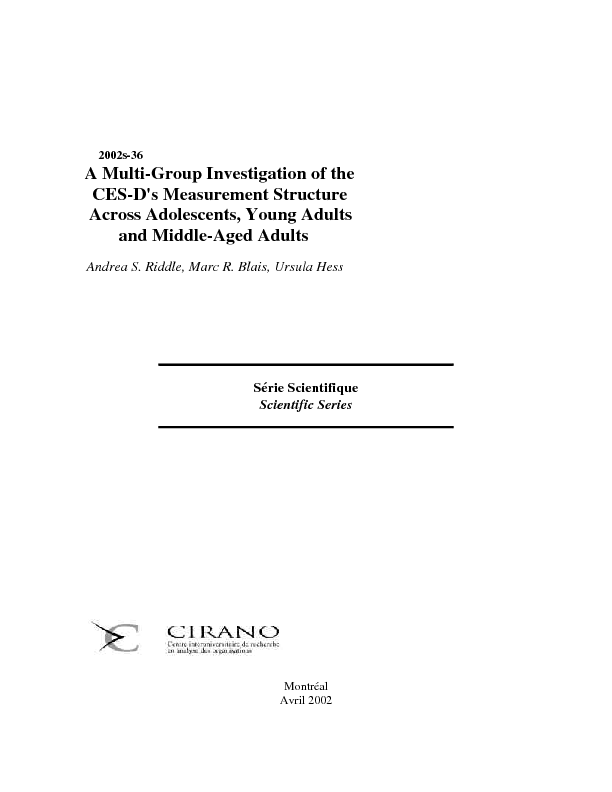A Multi-Group Investigation of the CES-D's Measurement Structure Across Adolescents, Young Adults and Middle-Aged Adults
The aim of the present research was to investigate, via multi-group analyses, the dimensional structure of the CES-D (Radloff, 1977) across three age groups. For this, three studies were conducted on cross-sectional samples of French speaking respondents, varying in age and drawn from the Quebec educational system: 599 adolescent high school students, 291 young adults attending university, and 844 middle-aged adult employees of a school board. Five a priori hypothesized models were tested via structural equation modeling: a single-factor, two three-factors, a four-factor and a second-order factor model. The four-factor and the second-order factor model provided the best fit and the latter model remained largely invariant across the groups when tested via multi-group comparisons. Other psychometric characteristics of the French Canadian version of the scale (e.g., test-retest reliability, internal consistency, convergent-discriminant validity) were also shown to be satisfactory. Possible applications of subcomponent scores in research (based on the multidimensional structure of the scale), rather than the commonly used composite CES-D score, are discussed.
[ - ]




